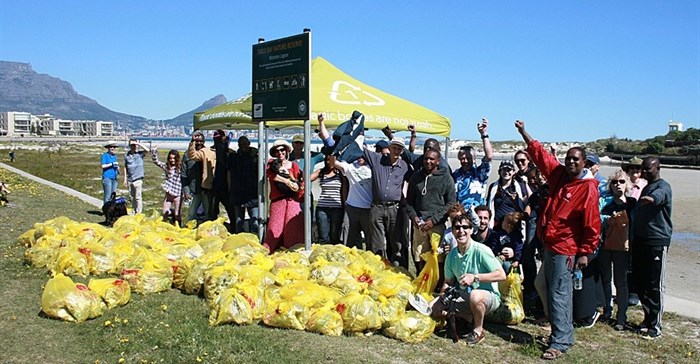
According to John Kieser, sustainability manager at Plastics|SA and coordinator of the event in the three Cape Provinces, good weather on the day resulted in more volunteers participating than was originally expected, allowing them to cover more distances along the coastlines and collecting more litter than in previous years.
"In the 19 years of coordinating the International Coastal Clean-up in the three Cape Provinces, I have never experienced a clean-up like the one on Saturday this year. We had an incredible turnout of people that wanted to make a difference to South Africa's coastline. The dedication to picking up mainly small items, was overwhelming and we collected more micro waste than larger pieces of litter on the beaches. The comradery and positivity will always stay with me," Kieser commented.
Approximately 47 tons of litter were removed along 380km of coastline, of which 17km were rivers and waterways, and 5km² were in underwater areas. Whilst KwaZulu-Natal was less fortunate with the poor weather that affected the number of volunteers who participated, the Cape provinces alone attracted more than 15,000 people from all ages who flocked to the 421 beaches.
According to Kieser, this year saw a dramatic increase in the number of clean-ups held in the Eastern Cape, attracting volunteers that could equal those who attended the Western Cape clean-ups. "It is wonderful to see that participation is growing across all racial and age groups each year and that the event is becoming truly representative of our country's demographics," Kieser said.
"The need to separate material earmarked for recycling has been increasing each year. To this end, we were requested to supply many clean-up sites with two different coloured bags, one for recyclables and one for ordinary waste disposal. The challenge now lies in getting all the data collated to give us a picture of what is lying on our beaches," Kieser explains.
Brand SA and Department of Environmental Affairs also endorsed the day, with Deputy Minister of Environmental Affairs Barbara Thomson attending a beach clean-up in East London and encouraging the plastics, metals and glass industries to continue with their voluntary efforts to increase recycling.
Plastics|SA will be spending the next few weeks compiling and analysing the sheets that were filled
in by the coordinators and volunteers during the clean-ups. This information will be supplied to Ocean Conservancy, which draws up an annual report that gives the world's only item-by-item, location-by-location snapshot of marine debris in an annual report.
Concludes Kieser: "By understanding what is out there, we can work together on finding long-term solutions to the problem of marine debris - not only along our own coastline, but the entire African coast. To this end, Plastics|SA will continue to strengthen the excellent work done through the South African Network on Marine Debris and as a signatory of the Global Declaration of the Plastics Associations for Solutions on Marine Litter."